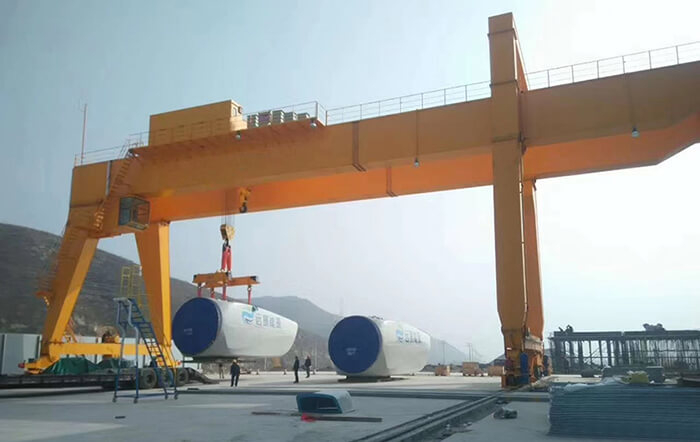The effects of the global pandemic included a slowdown in construction and logistical projects and operations, in part due to disruptions in both cash flow and supply chains. However, aside from areas of specialization (such as the transport of fossil fuels which continues to be subject to global disruption) business has returned to a state of (at least) semi-normality.
This includes construction and logistics (such as warehousing and docks), as well as many other types of industries investing once again in capital equipment, including 100 ton gantry cranes.

One of the most popular types of cranes is the overhead variety, especially gantry cranes. This type of crane is well known for its versatility with many types on the market suitable for a number of operational environments. However, for businesses that require durability, ease of operation, and sheer lifting power the 100-ton gantry crane is the solution of choice.
The business is faced with a challenge when it comes to choosing exactly which 100-ton gantry crane would suit the unique operational requirements. There are numerous makes and models on the market that can handle this type of loading. Here is a short guide that can help those in search of an industrial gantry crane with these specifications make the right choice.
First (and possibly one of the most popular choices) is the ‘full’ gantry crane. This design features a cross beam, legs, and a hoist. These cranes are tremendously versatile and tough – and can handle weights in excess of 100 tons (depending on size). The versatility of this type of crane is further enhanced by the mobile version’s ability to run on wheels, tracks, or rails. The rubber tyred gantry crane is another option -these models by and large will be able to handle loads approaching 100 tons.
Another popular version of the gantry crane is the semi-gantry crane which features one leg with the opposite side of the beam being attached to a wall or other supporting structure. The larger versions may be able to handle 100-ton loads. However, they are usually installed below the main overhead crane in a warehouse or other facility in order to improve work efficiency.
Single girder gantry cranes have a single bridge beam and components include the main beam, the support legs, the crane drive, the cross beam, controls, and the hoist.
However, when it comes to extremely heavy loads most companies will opt for the double-girder gantry crane. these cranes are capable of hoisting materials such as containers weighing several hundred tons (depending on size and capacity). Aside from the immense bearing capacity these gantry cranes boast a large span and excellent stability. These cranes have ‘A-Frame’ legs and are also available as semi or two-leg designs.
There are many other types of gantry cranes on the market. However buyers should ensure that they deal with a reputable supplier with a history of manufacturing exceptional equipment – and that offers support services. This ensures both exceptional productivity – and the safety of those who will be working with or close to the crane.